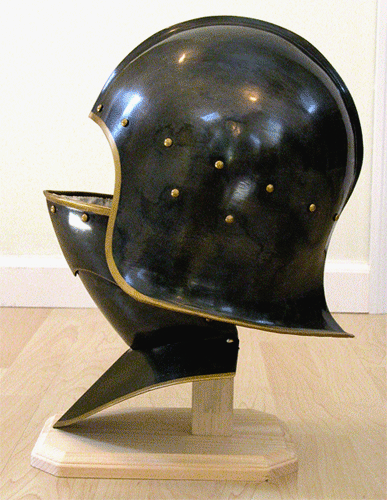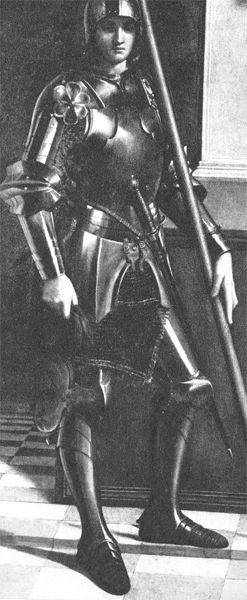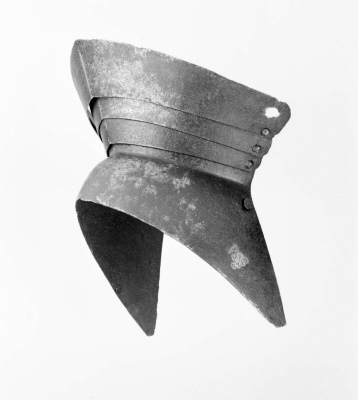| Author |
Message |
Sean Flynt

|
|
   |
 |
Sean Flynt

|
|
   |
 |
D. Austin
Industry Professional

Location: Melbourne, Australia Joined: 20 Sep 2007
Posts: 208
|
 Posted: Tue 30 Sep, 2008 2:52 am Post subject: Posted: Tue 30 Sep, 2008 2:52 am Post subject: |
 |
|
I missed this when it was first posted but I'm glad I noticed it. This piece is awesome! I want one.
Thanks for sharing it Sean, a great find.
|
|
  |
 |
|
J. D. Carter
|
|
   |
 |
Sean Flynt

|
|
   |
 |
|
J. D. Carter
|
 Posted: Thu 02 Oct, 2008 11:39 am Post subject: Posted: Thu 02 Oct, 2008 11:39 am Post subject: |
 |
|
I was afraid that was the likely answer. Judging from the photo I would agree that they do indeed look to be bullet holes. I cringe when I think of some of the things my cousins & I used for target practice on our uncles farm.
Glass bottles had value as they could be turned in for cash. Old moldboard plows, discs and hay rakes had no value...then.
It will be interesting to see a modern interpretation of that piece when your project is completed .
|
|
   |
 |
Sean Flynt

|
 Posted: Thu 02 Oct, 2008 12:44 pm Post subject: Posted: Thu 02 Oct, 2008 12:44 pm Post subject: |
 |
|
| J. D. Carter wrote: | | It will be interesting to see a modern interpretation of that piece when your project is completed . |
I've arranged to have this deep sallet cut down to a more appropriate shape by its maker. Then I'll sell the bevor to fund the project and give me a bit extra for my vanished a&a fund. The edging will be a challenge. I've been experimenting with different techniques and gauges of brass sheet. I know what to do in theory, and I see real promise the work, but I haven't yet decided what I want to do (what motif and technique). The edging of the RA's sallet appears to be very thin (24 ga.? 26?), so the decoration may be repoussť/chasing. The motif is egg-and-dart in the upper course and a repeating floral stamp or chasing in the lower. I made a laurel leaf stamp by filing down an old screwdriver, then I used that to stamp the reverse of some thin brass sheet to make a laurel wreath pattern. It works (!) but I'm going to keep studying artwork of the period for ideas.
 Attachment: 108.52 KB Attachment: 108.52 KB

-Sean
Author of the Little Hammer novel
https://www.amazon.com/Little-Hammer-Sean-Flynt/dp/B08XN7HZ82/ref=sr_1_1?dchild=1&keywords=little+hammer+book&qid=1627482034&sr=8-1
|
|
   |
 |
Sean Flynt

|
|
   |
 |
|
Darren Tully
Location: Dublin, Ireland Joined: 14 Oct 2008
Posts: 49
|
 Posted: Wed 15 Oct, 2008 3:09 pm Post subject: Posted: Wed 15 Oct, 2008 3:09 pm Post subject: |
 |
|
|
Very nice is that an archers sallet I was told the open versions were for archers to give better visibility I was just wondering if it's true or not because good vision and protection offered from that model I wonder why the slit visored ones were so popular
|
|
  |
 |
Sean Flynt

|
 Posted: Thu 16 Oct, 2008 7:18 am Post subject: Posted: Thu 16 Oct, 2008 7:18 am Post subject: |
 |
|
| Darren Tully wrote: | | Very nice is that an archers sallet I was told the open versions were for archers to give better visibility I was just wondering if it's true or not because good vision and protection offered from that model I wonder why the slit visored ones were so popular |
If it's true at all it wasn't universal. Contemporary artwork shows archers in both visored and visorless sallets. With the visor up, I'm not sure there would be any significant difference between the two. There are also national preferences. The Italians favored visorless sallets, which is why visored Italian sallets of the mid 15th c. are often referred to as "export sallets". There are exceptions, of course. For reference, see the artwork of Carpaccio, Giorgione, Pinturicchio, etc.
The sallet in question is a very fine one, attributed to one of the top armourers of the day. It's owner was of high status, no doubt. He could have afforded a visored sallet if he wished. Consider the image below of St. Liberalis from a Giorgione alterpiece of ca. 1500. The armour is certainly fit for a warrior saint (whose lance suggests cavalry,) yet the sallet is open-faced, with a medial ridge that runs to the edge and domed rivets across the brow. The top of the helmet isn't visible here (my scan error--I'll try again later) but it includes two additional ridges. There is no brow reinforcement or obvious provision for a visor. Whatever their practical value, visors don't seem to have connoted status or combat role.
 Attachment: 134.14 KB Attachment: 134.14 KB

|
|
   |
 |
|
Darren Tully
Location: Dublin, Ireland Joined: 14 Oct 2008
Posts: 49
|
 Posted: Thu 16 Oct, 2008 2:10 pm Post subject: Posted: Thu 16 Oct, 2008 2:10 pm Post subject: |
 |
|
Thanks for answering my question Sean that was really insightful
I wish you all the best with your progect be sure to show us the end result
|
|
  |
 |
Sean Flynt

|
|
   |
 |
|
Daniel Sullivan
|
 Posted: Wed 04 Feb, 2009 9:07 pm Post subject: Posted: Wed 04 Feb, 2009 9:07 pm Post subject: |
 |
|
Was just following this thread and migrated to the RA collection. Have any of you noticed the photo of 111.1915; identified as a fauld? It is in the Rhodes group and is said to be Spanish. Origin may be correct....however, it is a wrapper just flip the photo. Undoubtedly someone has noticed before me (I always seem to have a firm grasp of the obvious)!
Regards,
Dan
|
|
  |
 |
Sean Flynt

|
 Posted: Thu 05 Feb, 2009 7:08 am Post subject: Posted: Thu 05 Feb, 2009 7:08 am Post subject: |
 |
|
| Daniel Sullivan wrote: | Was just following this thread and migrated to the RA collection. Have any of you noticed the photo of 111.1915; identified as a fauld? It is in the Rhodes group and is said to be Spanish. Origin may be correct....however, it is a wrapper just flip the photo. Undoubtedly someone has noticed before me (I always seem to have a firm grasp of the obvious)!
Regards,
Dan |
That is very strange. I'd agree, but it's impossible to say for certain without seeing dimensions. Big size differential between neck defense and hip defense. Maybe "fauld" can sometimes be used to describe the articulated lower parts of a bevor/wrapper? 
 Attachment: 31.44 KB Attachment: 31.44 KB

-Sean
Author of the Little Hammer novel
https://www.amazon.com/Little-Hammer-Sean-Flynt/dp/B08XN7HZ82/ref=sr_1_1?dchild=1&keywords=little+hammer+book&qid=1627482034&sr=8-1
|
|
   |
 |
Jean Thibodeau

|
 Posted: Thu 05 Feb, 2009 9:03 am Post subject: Posted: Thu 05 Feb, 2009 9:03 am Post subject: |
 |
|
| Sean Flynt wrote: | | Daniel Sullivan wrote: | Was just following this thread and migrated to the RA collection. Have any of you noticed the photo of 111.1915; identified as a fauld? It is in the Rhodes group and is said to be Spanish. Origin may be correct....however, it is a wrapper just flip the photo. Undoubtedly someone has noticed before me (I always seem to have a firm grasp of the obvious)!
Regards,
Dan |
That is very strange. I'd agree, but it's impossible to say for certain without seeing dimensions. Big size differential between neck defense and hip defense. Maybe "fauld" can sometimes be used to describe the articulated lower parts of a bevor/wrapper?  |
Looks like a Bevor to me but the pic is upsidedown I think: The lames would cover the neck.
You can easily give up your freedom. You have to fight hard to get it back!
|
|
  |
 |
Chris Gilman

Location: California Joined: 07 Dec 2007
Posts: 82
|
 Posted: Thu 05 Feb, 2009 1:27 pm Post subject: Posted: Thu 05 Feb, 2009 1:27 pm Post subject: |
 |
|
This is most likely a 1/2 wrapper for an armet, yes, up-side-down.
Chris
|
|
   |
 |
|
|

